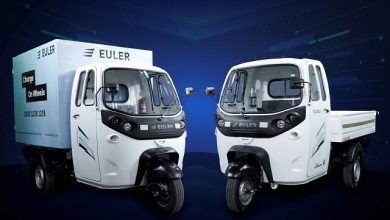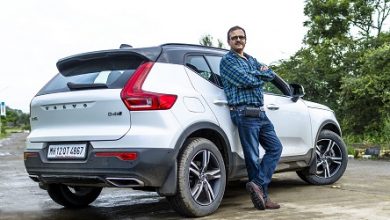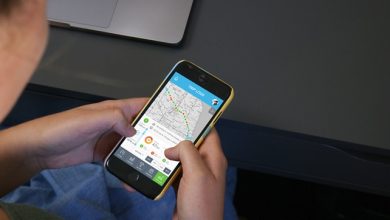Auto Insurance and Telematics

Why Does Telematics Matter to Auto Insurers?
Real time vehicle data is of strategic and operational importance to auto insurers. When auto insurers have access to live vehicle and driver data, with minimal latency, it is transformative. Real time data on vehicle mileage, speed, location, crash events as well as driver inputs to the vehicle, such as acceleration, braking and cornering outside safe limits, are crucial when managing risk. Our experience has shown that telematics solutions can lift auto insurers’ combined ratio by 20% or more. It is axiomatic that better data translates into improved risk management and real time vehicle operational information leads to sustained competitive advantage for insurers.
Vehicle and driver telematics, are critical to auto insurers because they:-
- Improve risk selection and the ability to price selected risk more accurately
- Allow easier verification of compliance with terms of the insurance policy, minimize leakage and mitigate fraud.
- Automate key steps within the claims process, reducing costs with automated first notice of loss (FNOL), vehicle triage/assignment and subrogation
- Help improve customer retention with faster claims response, more competitive premium pricing, engaging content and gamification.
- Build value add and differentiation for intermediaries (brokers, agents and MGAs)
- Generate sustainable competitive advantage for underwriters.
- Grow shareholder value with greater enterprise value and market capitalization.
Despite these clear benefits, the adoption of telematics by insurers has been modest. Leading auto insurers such as Progressive in the US, AXA in France and Switzerland, Generali and Unipol in Italy, have been developing and offering telematics as part of their programs in some cases, for 20 years. However, some estimates indicate about 25M active usage based insurance (UBI) policies globally in 2019. Out of 850M vehicles insured worldwide, that’s just 3% of the total available market. While most auto insurers have telematics products in production or in development, there are several reasons why the adoption of telematics has been limited so far in most of the world’s largest markets. As an industry, auto insurance is mature, slow growth, low margin, and well-regulated. Traditional data products used for rating, risk selection and claims management are largely historic in nature, and relatively inexpensive. Vehicle telematics on the other hand, generally requires a vehicle mounted device incorporating sensors and mobile communications technology. In short, there is far more cost and complexity with telematics than with traditional insurance data solutions, and this explains in part, why usage of telematics is so low (Italy and a handful of other countries are exceptions). The benefits to auto insurers of real time operational data are so significant however, that telematics solutions providers (TSPs) who are able to develop products, that meet information requirements throughout the insurance value chain, at price points that meet the norms of auto insurance, are simple to deploy and are accepted by consumers, will thrive.
What’s Happening Today?
Auto insurers manage the financial risk associated with driving vehicles on the public roads. There are over 276M registered vehicles on US roads, generating $247B in premiums annually (US data, private passenger vehicle premiums, 2019). A key factor in the market is the compulsory nature of third party liability insurance, required for drivers to operate vehicles on the public roads. The enforcement of this requirement on motorists creates an inbuilt demand for both personal and commercial auto insurance. When collisions, i.e. crashes occur, and insurance claims are generated, insurers payout money to compensate the injured party, which is known as a “loss”. These losses, plus the cost to administer the claim are known as a loss adjustment expense (“LAE”), combine to form a key metric known as the Combined Ratio (i.e. claims losses, plus LAE expressed as a percentage of premiums received). The Combined Ratio is a key measure of operating efficiency and profitability for auto insurers. In figure 1, you can see the Liability product line, for every year except 2020, the Combined Ratio exceeded 100%. In effect, US auto insurers are operating at a net loss on underwriting operations, as claims exceed premiums. 2020 is the only year in which the Combined Ratio fell below 100%, and this is most likely due to the effect of Covid 19, which shut down vehicle usage significantly for part of the year, resulting in reduced crashes, and consequent claims. The Combined Ratio performance greatly influences how insurers choose to use vehicle telematics, or not. For most insurers, when their book of business has a Combined Ratio of more than 100%, they are reluctant to increase costs. Vehicle telematics products used in commercial fleets, require equipment purchase which can range from $65 to $100 per device, plus installation costs, with a service costing on average $20/ per vehicle per month. This expense is a non-starter for most personal line and commercial line underwriters. The mass adoption of smart phones over the past 10 years however, has presented auto insurers with a partial solution to their conundrum. How to access vehicle and driver data, in real time, without having to pay for the equipment or the ongoing operating costs? Mobile only solutions are very attractive for insurers in this respect.

The current trend for personal lines insurers then, can be summed up as follows:
1: Mobile only solutions
2: Beacons (w/Bluetooth), paired with smartphones
3: Connected Car data from vehicle manufacturers (OEMs)
Mobile only solutions
Mobile solutions, (apps installed on the phone plus a portal) are now the dominant option for personal lines auto insurers, personal lines. The insurer has to develop the app, a portal and a scoring algorithm which are not technically challenging. In addition to the very modest cost of this approach, the insurer also avoids the complexity of dealing with telematics hardware, which insurers generally, are not set up to do. On the surface, mobile only would appear to be a perfect fit for insurers, they get lots of telemetry data, and the insured pays for the majority of the cost of capturing the data via his phone, and transmitting data to the insurer’s server using his own data plan. The drawback however, is that mobile only apps generally address the underwriting side of the equation, i.e., mileage, speed, scoring, location and driving exception events. Gamification and engagement are also well suited to mobile apps. What’s not so easy to do with mobile only, is claims. Specifically, first notice of loss (FNOL) which is required in the event of a collision or crash. While there are many technical reasons why a smartphone is not suited for reliable crash detection and therefore FNOL, one key reason is the phone is rarely securely attached to a rigid attachment necessary for reliable crash detection. Generally, a phone is in a cup holder, a purse or in a pocket. Because the phone, equipped with an accelerometer, is moving independently of the vehicle, a significant amount of signal noise is generated. Usually, a TSP will address the noise issue by having a call center reach out to the driver if they see a signal that could be a collision. However, this is neither reliable nor cost effective. The model described, using a call center as a filter, protects the insurer’s claims department from being overwhelmed with false reports (i.e. false positive signals from the system). The cost however is passed onto the insurer in the service charge and confirmation calls to the driver must be minimized, else the customer experience will be impacted.
Over the past few years, new products leveraging the power of mobile phones enabling the driver to capture photos of crash events, and generate an immediate estimate of the damage have emerged. Images of the crash, captured by the driver on his phone are uploaded to a server. Photos of the damaged vehicle can be processed via an AI program which usually relies on libraries of actual crash images and proprietary algorithms to make inferences about the level of damage and generate a repair estimate quickly. Companies such as Snapsheet, Tractable and others lead in this space. Decisions can also be made by remote human adjusters, or “desk based adjusting” which avoids an adjuster having to travel to the scene and make a disposition on the vehicle.
Beacons

Beacons, equipped with Bluetooth radios, are a good alternative to mobile only. They avoid the weakness of mobile only products, as they are secured to the vehicle (e.g. windshield mounted or 12V DC outlet types). They cost much less than OBDII dongles or hardwired black boxes associated with fleet telematics, as they are not equipped with a mobile radio, or GPS receiver. Instead, they generally use a Bluetooth low energy radio to transmit data to the driver’s smartphone (equipped with a 4G/5G mobile radio as well as a GPS receiver) which backhauls the data to the server. Beacons, using BTLE automatically connect with the driver’s phone once paired, so trips using the vehicle are captured. This avoids the problem often experienced with mobile only solutions, where drivers riding as a passenger in a vehicle other than their own, capture trips which are not related to their own insured vehicle. This creates errors and impacts the user experience, especially if drivers are recording mileage associated with another person’s vehicle. For vehicle crash performance, and thus claims, beacons are much better than mobile only. However, many beacon designs, are not particularly effective or reliable when detecting and characterizing vehicle crashes. Beacons still require device management on the part of the insurer, the insurer intermediary or the TSP. Beacons are not attached to the vehicle’s Can bus, so offer no vehicle engine or sub system data and diagnostics, parameters which are sought in the fleet market.
Vehicle Manufacturer (OEM) Connected Car Data

Because of the challenges presented by both mobile only and beacons, many insurers and data brokers view access to OEM Connected Vehicle data as compelling. Most global OEMs offer a Connected Vehicle service. OEMs are increasingly interesting in monetizing data, by selling to third parties, such as data brokers and insurers.
GM’s OnStar® is the oldest Connected Vehicle solution, first offered to GM customers in 1998. Connected Vehicle services like OnStar® are integrated with the vehicle’s onboard Can bus, an in vehicle network of dozens of electronic control units (ECUs). Late model vehicles can have more than 100 ECUs on board, managing key systems such as the engine, cruise control, HVAC, transmission, ABS, ESC and airbag systems to name a few.
Connected Vehicle services offer key advantages to auto insurers seeking vehicle data, such as:-
- Vehicle sensors and telematics control unit (TCU) are installed by the vehicle manufacturer (OEM) and the ongoing service is paid for by the consumer (after the initial free introductory period, usually several months)
- Very accurate, reliable, timely and forensic vehicle crash data. These data can be purchased on a case basis, i.e. as needed.
- Excellent sub system diagnostic information
- Vehicle usage information
- There is no burden on the insurer to manage telematics equipment
There are however, several major drawbacks associated with using Connected Vehicle data in insurance operations.
- Cost.
- Crash data availability. OEM Connected Vehicles solutions rely on the vehicle’s airbag system control unit (Airbag ECU), which houses the event data recorder (EDR), as the source for vehicle crash data. Most, though not all, airbag ECUs deploy inflatable restraints only in crash events which are likely to result in occupant injury. The majority of insurance claims involve low speed impacts, not captured by the airbag system, and thus not recorded by the airbag ECU and EDR.
- Consumer participation and data privacy. While the majority of new cars have connected services installed as original equipment at assembly, the take up of subscriptions once the free period has expired, can be quite low. In some cases, fewer than 15% of owners opt to pay for the monthly subscription. Without subscribers willing to pay for the services, and give their consent to the Connected Vehicle service (and their licensees) to use their data, the OEM risks infringing vehicle owners’ data privacy rights, such as CCPA in the US and GDPR in the EU. In addition, the ownership of the raw data itself, generated by the vehicle is generally accepted to rest with the vehicle owner or lessee, not the OEM or TSP.
What’s Next For Insurance Telematics?
Auto insurers are likely to continue to demand, and TSPs will continue to develop, solutions that optimize the five Cs of insurance telematics, combined ratio, complexity, compliance, convenience and cost. If telematics solutions generate value across the five Cs, there is likely to be a substantial market growth. If not however, we predict adoption will continue to be relatively modest.
Telematics solutions for insurance are greatly influenced by the technology ecosystem on which they depend, including telecommunications, vehicle technology, electronics costs, data science and AI.
Mobile telecommunications, essential to delivering real time data, will continue to offer more options, better data plans and enhanced 5G technology. Continuing improvements in telecom technology being rolled out now, will enable faster and better telematics products.
OEMs are steadily introducing ADAS (advanced driver assistance systems) on main stream vehicles. ADAS features such as Adaptive Cruise Control, Forward Collision Warning, Autonomous Emergency Braking, Blind Sport Monitors, have a demonstrable effect on collision avoidance and safety. The HLDI (Highway Loss Data Institute), a nonprofit research group funded by major US auto insurers, reported that forward collision warning (FCW) alone reduced front-to-rear crashes by 27 %, and reduced injury-related front-to-rear crashes by 20%. When FCW and automatic emergency braking (AEB) are combined, the HLDI showed reductions of 50 % in front-to-rear crashes and 56 % in front-to-rear crashes resulting in bodily injury. The downside is that the cost of repairing ADAS equipped vehicles has grown substantially. Telematics can’t help lower the costs of repairs themselves, but telematics offers multiple ways for TSPs to lower the cost of claims, and thus improve insurers’ combined ratio.
There is a saying, “there is no such thing as new math, just new data”. Using telematics, TSPs and insurers are increasingly building large repositories of vehicle operational data which in turn allow them to build better AI models which can make inferences about outcomes which are advantageous to insurers. Data sources such as mileage, vehicle sub system information, still images, video files, location, weather and crash metrics are already being harvested to build AI models. One can expect this to continue, and improve on the traditional broad brush inferences, to greater precision on case specific outcomes using expert systems.
Telematics technology is inherently complex, and so is auto insurance. The challenge for product managers and engineers is to continue to develop new telematics solutions which address the five C’s listed above. From our perch in the industry we are confident TSPs, and insurance carriers will continue to solve complex problems using telematics adding value to customers and shareholders.
Author:

Peter Byrne
CEO
driveEDR
Peter Byrne is a serial entrepreneur who has been involved in the startup and growth of several business during his career including Connected Cars, telematics, and vehicle safety system testing. He is currently CEO of DriveEDR, based in Colorado, an early stage insurtech specializing in delivering advanced vehicle and driving event data for auto insurers.
Published in Telematics Wire




